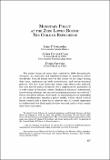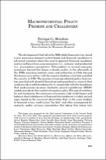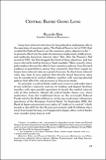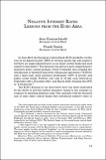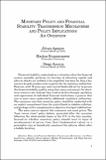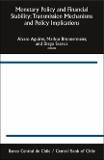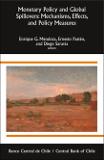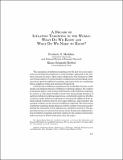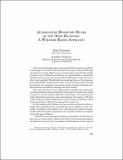Search
Now showing items 21-30 of 40
International aspects of the zero lower bound constraint
Large negative aggregate demand shocks can drive down an economy’s equilibrium real interest rate and if the central bank is committed to stabilizing inflation monetary policy may be hampered by the zero lower bound on nominal interest rates –the economy may be in a 'liquidity trap.' The policy dilemma ...
Monetary policy at the zero lower bound: the Chilean experience
The global financial crisis that started in 2008 dramatically changed the analysis and implementation of monetary policy worldwide. Central banks were at the center of the stage during that time implementing both conventional and unconventional policies. Not only were monetary policy rates drastically ...
Macroprudential policy: promise and challenges
The developments that led to the 2008 global financial crisis raised a new awareness amongst central banks and financial regulators in advanced economies about the need to approach financial regulation and surveillance from a macroeconomic (i.e. systemic) and prudential (i.e. pre-emptive) perspective. ...
Central banks going long
Long-term interest rates have for long played an ambiguous role in the operation of monetary policy. The Federal Reserve Act of 1913 that created the Federal Reserve set the monetary policy objective to be: '... to promote effectively the goals of maximum employment stable prices and moderate long-term ...
Negative interest rates: lessons from the Euro area
In June 2014 the European Central Bank (ECB) decided to cut the rate on its deposit facility (DFR) by 10 basis points (bp) into negative territory an unprecedented move as no major central bank had used negative rates before. This decision was part of a more comprehensive monetary policy easing package ...
Monetary policy and financial stability: transmission mechanisms and policy implications: an overview
Financial stability understood as a situation when the financial system smoothly performs its function of allocating capital and adverse shocks are unlikely to be amplified has been for long a key concern for policymakers and in particular for monetary authorities. However until 10 years ago most ...
Monetary policy and financial stability: transmission mechanisms and policy implications
The global financial crisis that broke out 10 years ago uncovered the buildup of risks during a period of price and output stability. It challenged the previous consensus that preserving price stability was the optimal way to ensure financial stability, and led to a surge of interest in the multiple ...
Monetary policy and global spillovers: mechanisms, effects and policy measures
Central Banks in emerging markets have been forced in the last decade to deal with spillovers from the crises in the United States and Europe and from the extraordinary measures respectively taken by the Federal Reserve and the European Central Bank. This volume provides a comprehensive study of the ...
A decade of inflation targeting in the world: what do we know and what do we need to know?
The emergence of inflation targeting over the last ten years represents an exciting development in central banks' approach to the conduct of monetary policy. After initial adoption by New Zealand in 1990, a growing number of central banks in industrial and emerging economies have opted for inflation ...
Alternative monetary rules in the open-economy: a welfare-based approach
How do central banks choose among alternative monetary polocies? In this paper we analyze that question for an open economy following an interest rate rule. Many issues remain controversial in the design of such a rule. If inflation is targeted, as it presumably is, should the domestic interest rate ...


